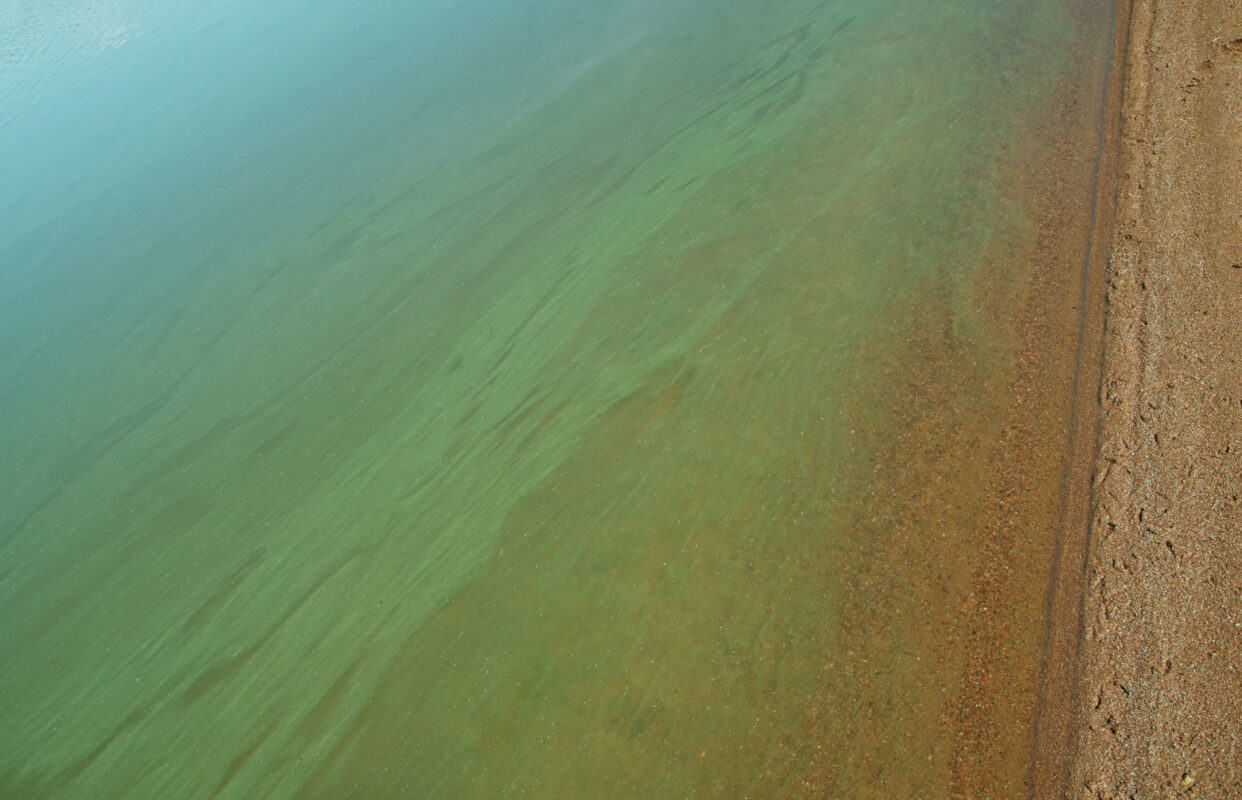Guide
Fighting blue-green algae in the aquarium – This is how it works
The fascinating world of aquatics beckons with a diverse underwater landscape in which colourful fish and lively plants form a harmonious ecosystem. But sometimes unwanted guests can spoil the pleasure of the aquarium. A particularly persistent phenomenon is the appearance of blue-green algae, also known as cyanobacteria. Blue-green algae in the aquarium can become a persistent and frustrating challenge for aquarists. Not only can these unwanted organisms detract from the aesthetic beauty of the aquarium, but they can also threaten the water quality and well-being of the fish and plants living in it. In this blog post, I will provide you with a comprehensive guide on how to effectively tackle blue-green algae in your aquarium.

Fighting thread algae in the aquarium: How do blue-green algae develop?
Blue-green algae, also known as cyanobacteria, are microscopic organisms that often occur in water bodies such as lakes, ponds and also in aquariums. Although the name “blue-green algae” suggests an algae-like structure, they are actually bacteria. These unwanted visitors can greatly alter the appearance of water bodies and aquariums and not only affect the aesthetic appearance, but also endanger the health of the ecosystem.
The growth of blue-green algae is favoured by a combination of different factors. One of the main causes is the excess of nutrients in the water, especially nitrogen compounds and phosphate. These nutrients often come from sources such as fish food, dead plant debris and fish excreta. When the nutrient concentration in the water becomes too high, they provide optimal conditions for cyanobacteria to multiply rapidly.
Another decisive factor is light. Blue-green algae are able to use light energy to carry out photosynthesis. Excessive exposure to light, especially if the aquarium or body of water is exposed to direct sunlight, can promote the growth of blue-green algae.
Insufficient water movement and aeration are also favourable factors. Stagnant water provides the blue-green algae with a stable environment in which they can spread.
Fighting blue-green algae in the aquarium: Are blue-green algae harmful?
One of the main concerns about blue-green algae is their ability to produce toxins. Under certain conditions, such as an overabundance of nutrients and warm water, blue-green algae can release harmful substances called cyanotoxins. These toxins can not only cloud the water and produce an unpleasant odour, but they can also pose health risks to humans and animals.
For humans, cyanotoxins can cause health problems if they come into contact with contaminated water. Inhalation or ingestion of water contaminated with cyanotoxins can cause symptoms such as skin rashes, eye irritation, nausea, gastrointestinal complaints and in severe cases even liver damage. Pets, especially dogs, are also at risk if they come into contact with blue-green algae or drink the water from affected bodies of water.
Apart from the health risks, blue-green algae can also cause ecological damage. Their excessive growth can lead to a “blue-green algae bloom”, where large quantities of these organisms cover the surface of water bodies. This can result in light being blocked, preventing other aquatic plants from photosynthesising sufficiently. This in turn can lead to a lack of oxygen in the water, endangering fish and other creatures.
These are the measures you can take
When blue-green algae grow uncontrollably, quick action is needed to restore the balance in the aquarium. Here are some effective methods to combat blue-green algae:
- Identify and eliminate causes: Before you start combating blue-green algae, you should identify the underlying causes. Excessive nutrients such as nitrogen compounds and phosphate, excessive light exposure and low water movement can contribute to the development of blue-green algae. Reduce fish feeding, perform regular water changes and check lighting duration and intensity.
- Manual removal: Start by manually removing the visible blue-green algae. Use a brush or clean cloth to gently scrub the blue-green algae from decorations, plants and surfaces. Also vacuum the substrate to remove dead organic material.
- Improve water movement: Blue-green algae prefer calm, stagnant water. By using additional filters or flow pumps you can increase the water movement and thus limit the growth of blue-green algae.
- Reduce light exposure: Reduce lighting duration and intensity to slow down the growth of blue-green algae. Perhaps use a timer to limit lighting to eight to ten hours per day.
- Use of predators: Some fish species and invertebrates are natural predators of blue-green algae. Snails, shrimps or fish such as Siamese snout darters can help control algae growth.
- Use of chemicals: In some cases, the targeted use of chemicals to control blue-green algae may be necessary. However, use such products with extreme caution and according to the manufacturer’s instructions, as they may also affect other organisms in the aquarium.
- Strengthen plant health: Healthy aquatic plants can help maintain the balance in the aquarium and compete for nutrients that blue-green algae need to grow. Make sure that the plants are properly cared for and fertilised.
Controlling blue-green algae requires patience and a combination of different measures. It is important to continuously monitor the water quality and make appropriate adjustments as needed to return the aquarium to a healthy and balanced state.
Combating blue-green algae in the aquarium – Conclusion
Blue-green algae are not only an aesthetic problem, but can also have harmful effects on health and ecosystems. Their ability to produce toxins makes them a serious threat. It is crucial to monitor their presence in order to react in time and take appropriate control and prevention measures to protect human and environmental health.